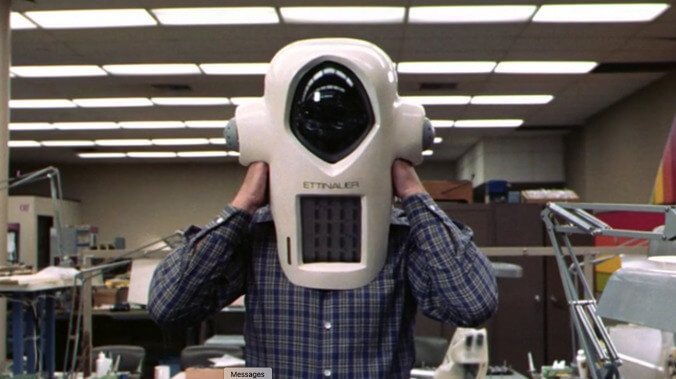Long before The Curse, Albert Brooks skewered “reality TV” with Real Life
Brooks' nearly perfect and prescient comedy anticipated the dark side of reality TV, four decades before Nathan Fielder would take up the mantle

Following last year’s reality TV home deconstruction project, The Rehearsal, Nathan Fielder returns to screens this week with The Curse. True to form, the series sees Fielder, who also directs and co-writes, and Emma Stone starring as aspiring HGTV gentrifiers Asher and Whitney Siegel. Co-written by Benny Safdie, who appears on the show as Dougie Schecter, the director of the Siegels’ house-flipping show, The Curse tests the limits of reality TV in ways that reveal the craven, self-interested intentions of those who make it. Surprisingly, in its debut, Fielder comes to similar conclusions to a prescient film released roughly 40 years earlier, Albert Brooks’ prophetic comedy Real Life.
In Real Life, Brooks plays “Albert Brooks,” a self-absorbed motion picture director from Hollywood. Parodying one of the earliest reality shows, 1973’s An American Family, Brooks directs “Brooks” as he directs the Yeager family for a one-year experiment. He will film the Phoenix-based family, hoping the banal activities of their mundane lives are enough to entertain the masses. Unfortunately, the family’s patriarch, Warren (Charles Grodin), emits rays of unsympathetic rage and insecurity that the camera can’t help but pick up, and he knows it.
In addition to cameras being planted throughout his house, a crew of space-aged cinematographers wearing state-of-the-art helmet cams documents the Yeager’s contentious dinners, triumphant trips to the amusement park, and the old-fashioned breakdown of the nuclear family. These cameras offer a diegetic explanation for the film’s footage. The black void of the camera’s eye fitted over the operator’s head appears in the background of many shots, with the frame matching their position. Though the movie occasionally cheats the conceit (a nitpick in an otherwise perfect comedy), the cameras offer the most explicit rebuttal to Brooks’ desire to film reality: Who could act normally in front of all these cameras?
There are many similarities between The Curse’s premiere and Brooks’ debut, aside from both coming from writers, directors, and actors who are deeply interested in modern Jewish masculinity and who cut their teeth in experimental meta-comedy. Fielder and Safdie’s characters mirror the relationship between Brooks and Yaeger as they wrestle for control of the camera. While Asher tries to negotiate his way out of an aggressive interview with a local newscaster, Warren, a veterinarian, tries to convince Brooks to cut his accidental killing of a horse in surgery. The footage of him “killing an animal of that size” haunts him. He can’t face the reality he created, and neither can Asher, who finds himself cursed after trying to fake a good deed with a young soda seller.
What’s still incredible about Real Life is that Brooks came to these conclusions long before reality television became a ubiquitous form of entertainment that entire networks would base programming around. To Brooks and Fielder, “reality” on television is not the unobstructed filming of life. Reality is whatever the director or star wants it to be, and the more they try to control the show around them, the more versions of that truth they find. Because ordinary people aren’t used to being in front of the camera, their inner reality comes to the fore. Ultimately, by trying to fit the whole of “real life” into a TV screen, Brooks and Fielder land upon a deeper truth: Reality is whatever the camera sees, whether the person in front of the camera wants to reveal it or not.